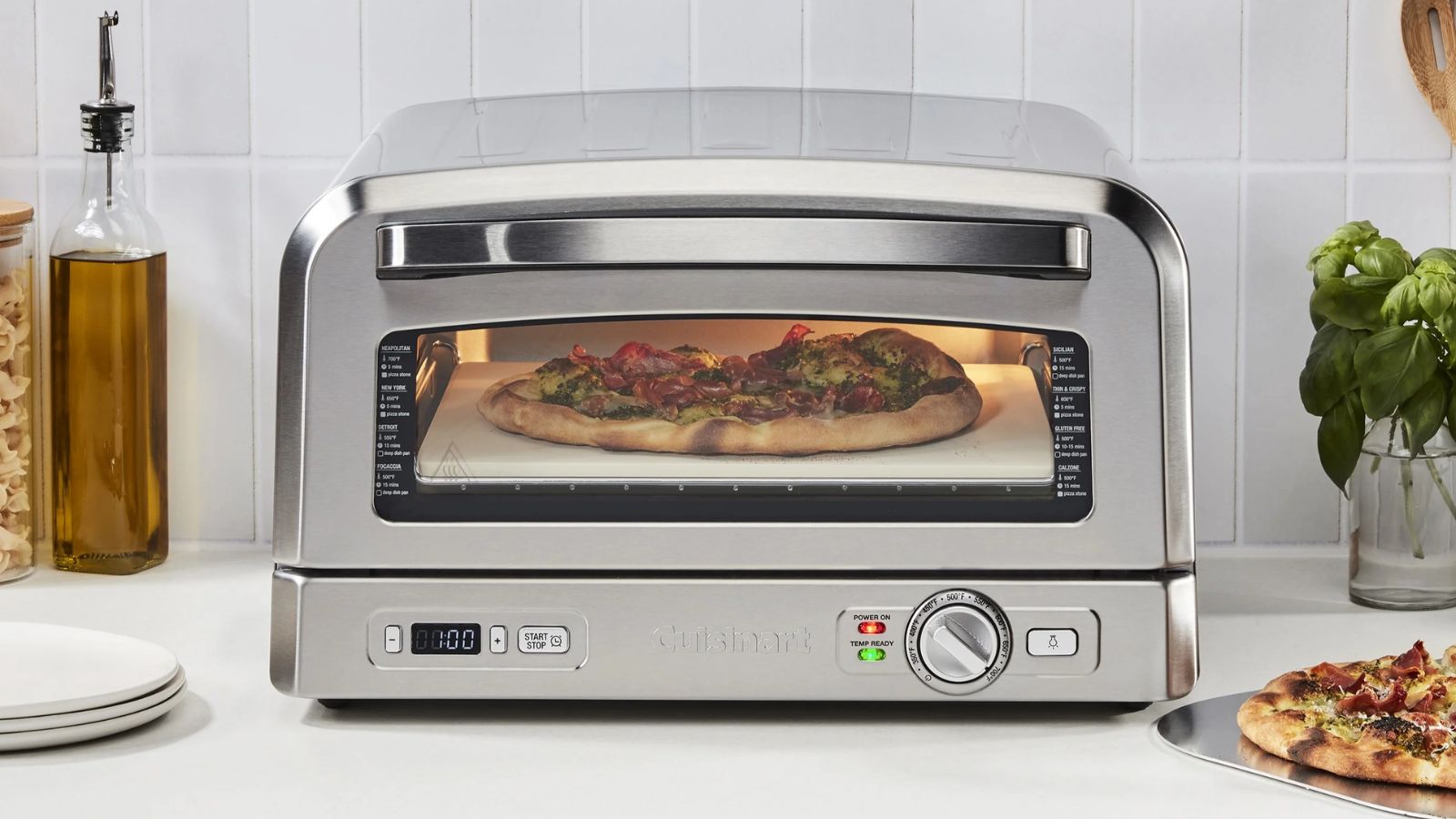
Most pizza ovens I test need a lot of setup. I need to clear a space outside and organize some propane, or arrange wood pellets and logs for a fire. On top of all of this, they're usually around $800.
Not so with the Cuisinart Indoor Pizza Oven. This is the rare pizza oven for under $500, and it's electric, so it plugs straight into an outlet. If you want a pizza oven on a budget, this - hypothetically - is the oven for you.
I've tested plenty of the best pizza ovens over the years, so I know exactly what to look for in a good model. Unfortunately, I didn't find it with this. It's a good oven, but I'm not convinced that it's any different to a kitchen oven.
Product specifications
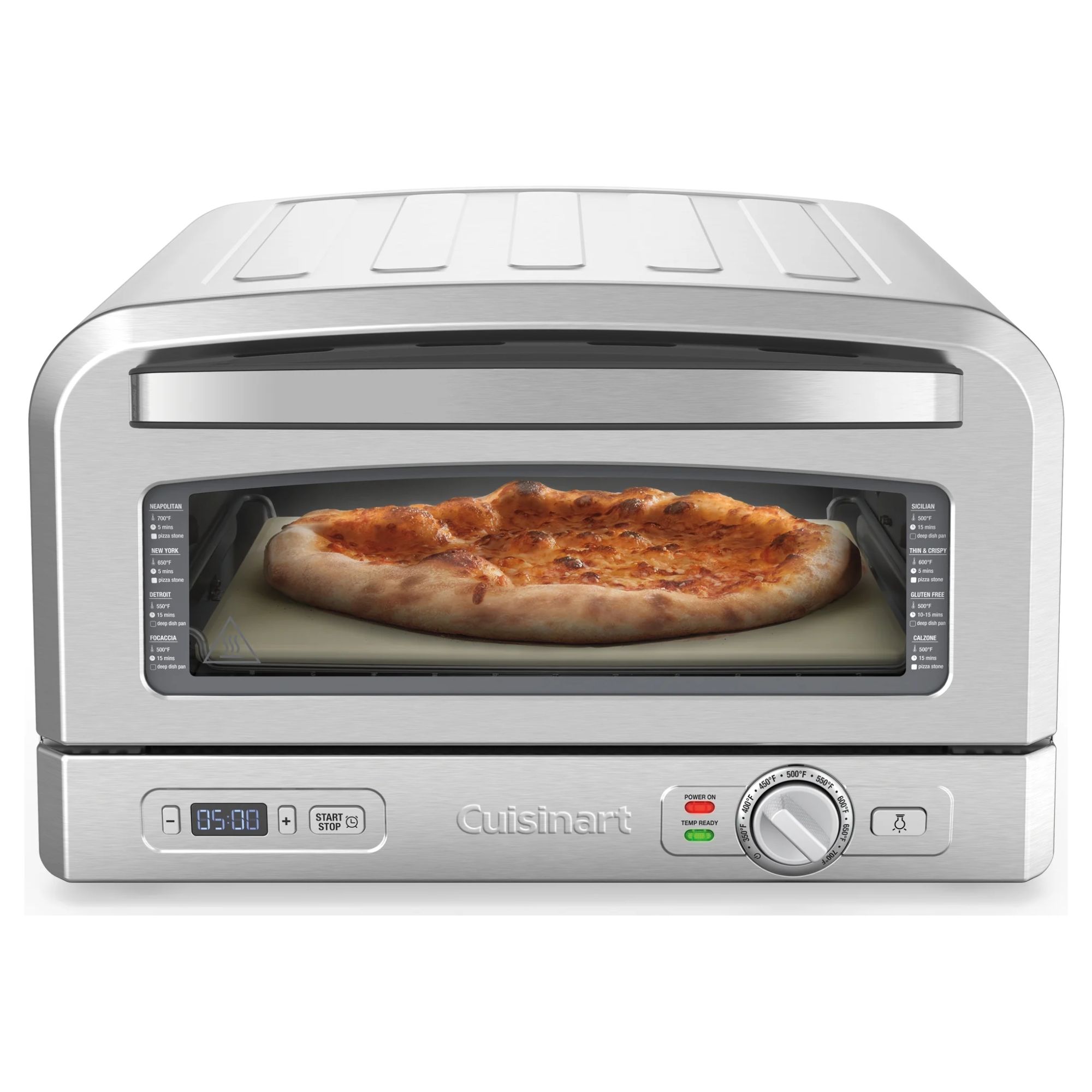
Unboxing
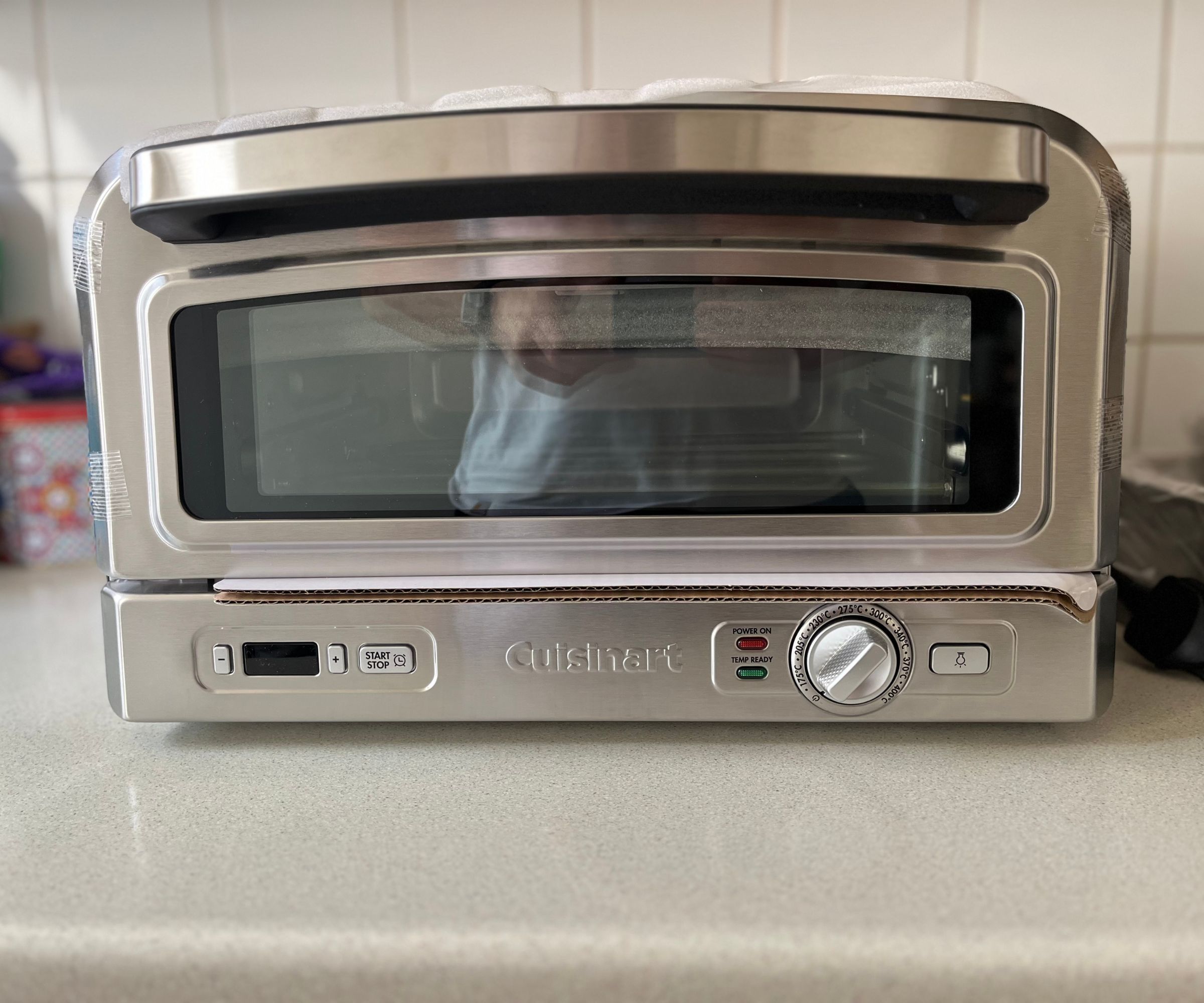
This oven arrived in a huge box which was almost too big for my countertop. There's no polystyrene, but there's some plastic wrapped around the oven.
This is a very big appliance. It's smaller than the Breville Smart Oven Pizzaiolo, but that's not saving very much. It's larger than any air fryer I've used and larger than a toaster oven, which is the closest direct comparison.
However, I was very happy to see all the extras that come with this pizza oven. It comes with a pizza peel, a pizza cutter, and a deep-dish pan. The biggest players in the pizza oven industry - Ooni and Gozney - don't include these essential accessories, so it was great to see them included in the box.
It's the easiest pizza oven to set up I've ever tested. You put the rack and pizza stone into the oven and you're ready to go. There's no gas or wood to connect and no steps to burn off plastic smells before you cook.
Test 1: Pepperoni pizza
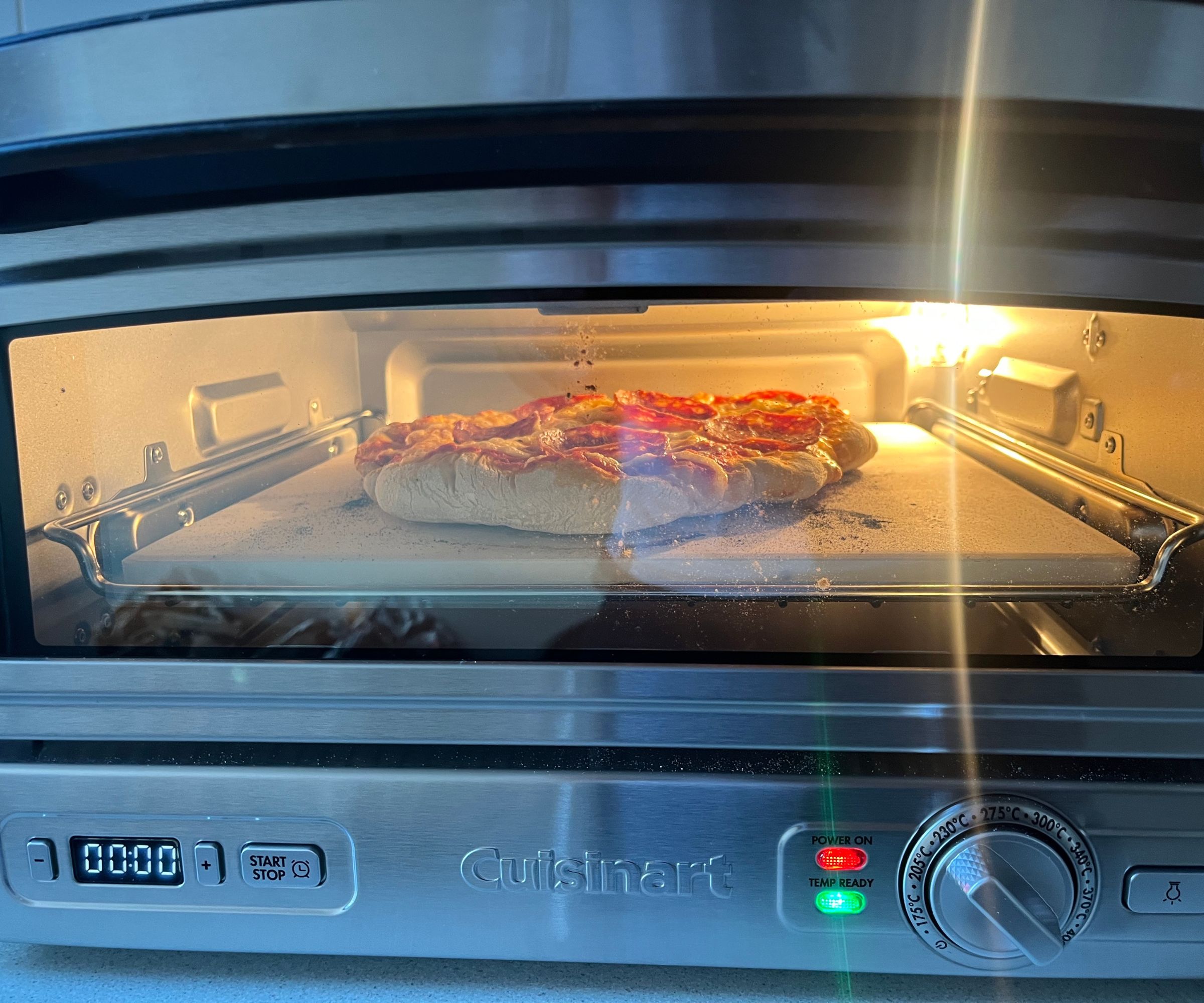
With nothing else to do, I started the first test. I kneaded, rested, and stretched out the dough, added some tomato sauce and shredded mozzarella for a simple Neapolitan cheese pizza.
As I prepared the dough, I set the pizza oven to warm up, and this was my first indication that it wouldn't be the greatest pizza I've ever made. This oven can only reach around 750°F. That sounds incredibly hot when compared to the average American domestic oven, which tops out at about 450°F. However, top-line gas and wood-fired ovens usually reach around 950°F, more than double the temperature of this oven. The very best can be hotter than 1000°F. This means that they give a pizza a delicious, charred crust, and cook it in around a minute. This oven was starting from a much lower temperature, so I was immediately unconvinced.
The other thing I noted as I waited for the oven to hit the temperature is that it's relatively loud. It maxed out at 60 dB. It's like a cheap air fryer, or someone using a hairdryer in the next room. It's hardly deafening, but it's the loudest of these ovens that I've tested.
After 12 minutes the oven beeped to let me know that it was at temperature, so I loaded a pizza onto the handy folding pizza peel and launched it into the oven. There was a little sticking here. I had floured the peel and the base of the pizza, but the peel had some holes in it which caught a little on the dough.
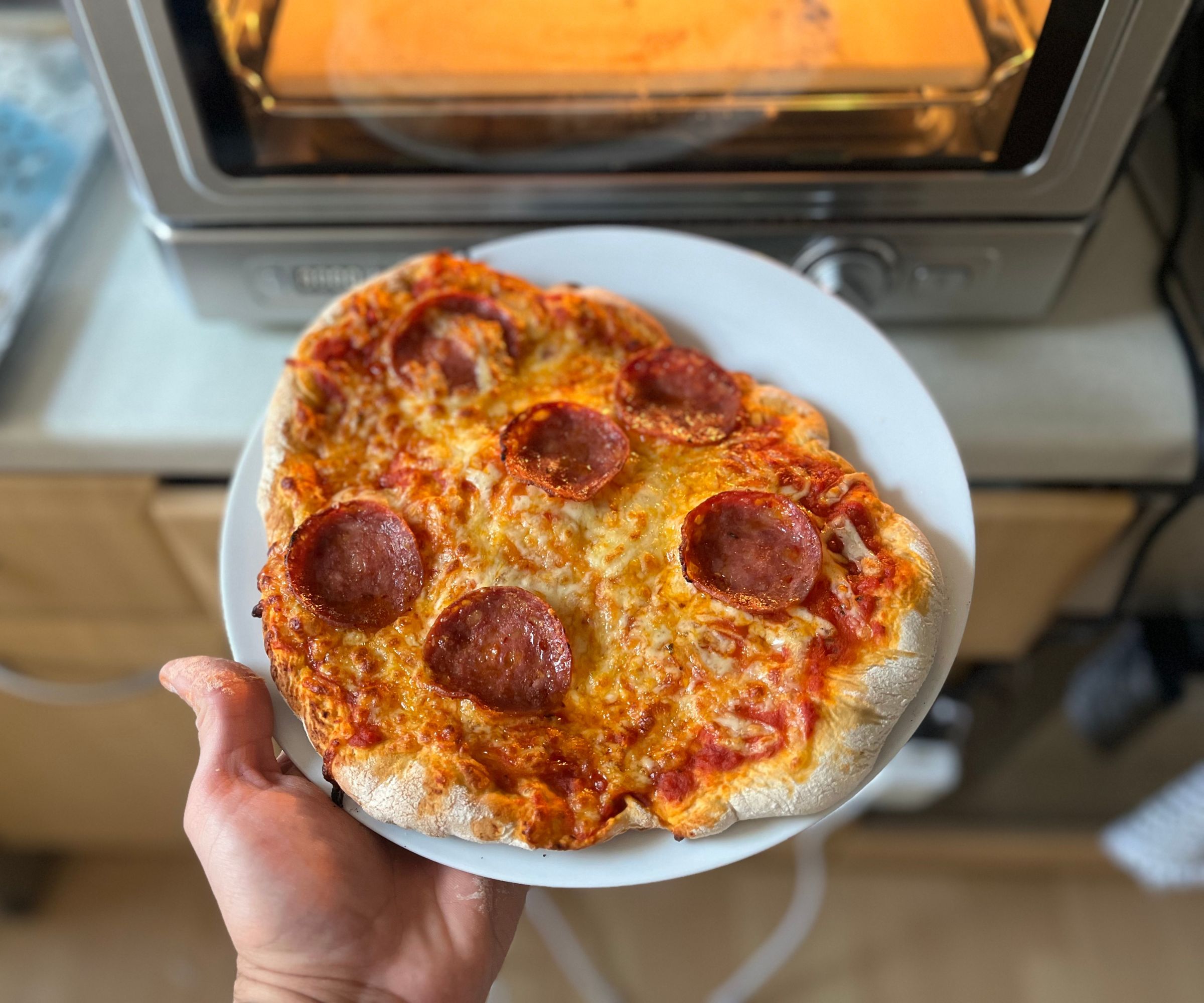
As I predicted, this oven was slow. Previous experience had me twitching to turn the pizza after half a minute, but it had barely changed color. After the typical one-minute mark, I was ready to take the pizza out, but again, it had barely started cooking. The crust puffed up at around the three-minute mark (it should do this almost instantly) and the pizza was ready in around 6 minutes.
The pizza lifted easily from the stone, which was a relief; I had worried that the cooler cooking temperature wouldn't be enough to separate the crust from the stone. The slicer was a lot of fun to use, too - unlike a pizza wheel, it's a mezzaluna, a long blade that had the pizza cut into perfect slices in seconds.
The pizza itself was a little disappointing. To paraphrase the saying, it's pizza - even when it's bad, it's still pretty good. It tasted like a frozen pizza: the dough was a little undercooked, the cheese was a little overcooked, but the crust was fairly good. However, I couldn't get past the fact that I would've had the same result from baking the pizza in my oven. It seems like a waste of $400 to buy a separate oven that's slightly harder to use for basically the same result.
Test 2: Cheese pizza
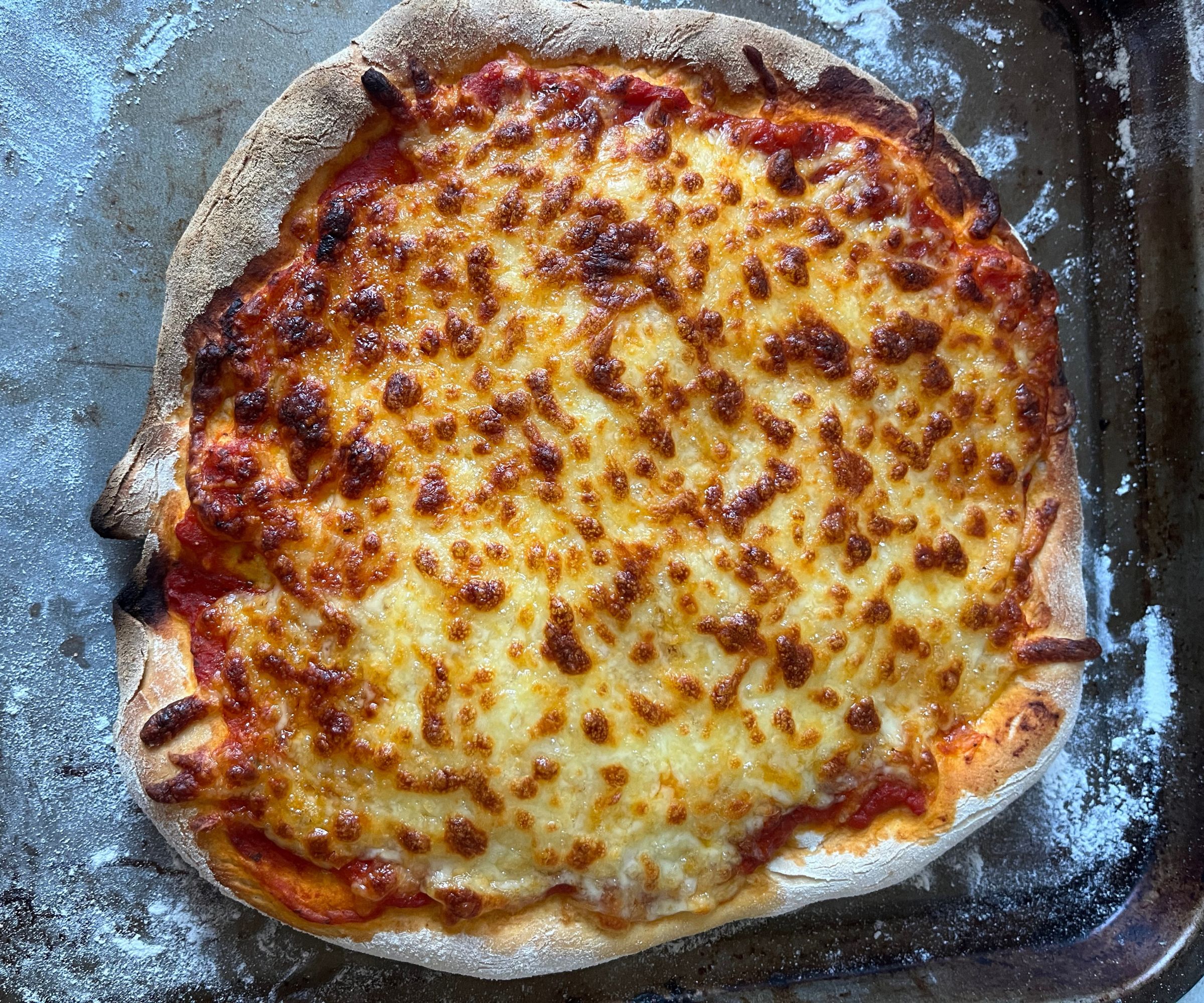
To ensure the problem wasn't user error, I tried a simple cheese pizza. I rolled the dough out to be a lot thinner, and I hoped that the dough would be less soggy without the grease from the pepperoni.
I found that this made some difference, but not much. It cooked faster, but I left it in longer just to be sure. This meant that the cooking time was around 7 minutes.
The result was fine, but again, it was not all that different from just cooking it in the oven. The dough was better cooked this time round, but still relatively soft. It has all the fun of using a pizza oven, but none of the results.
Test 3: Brownies
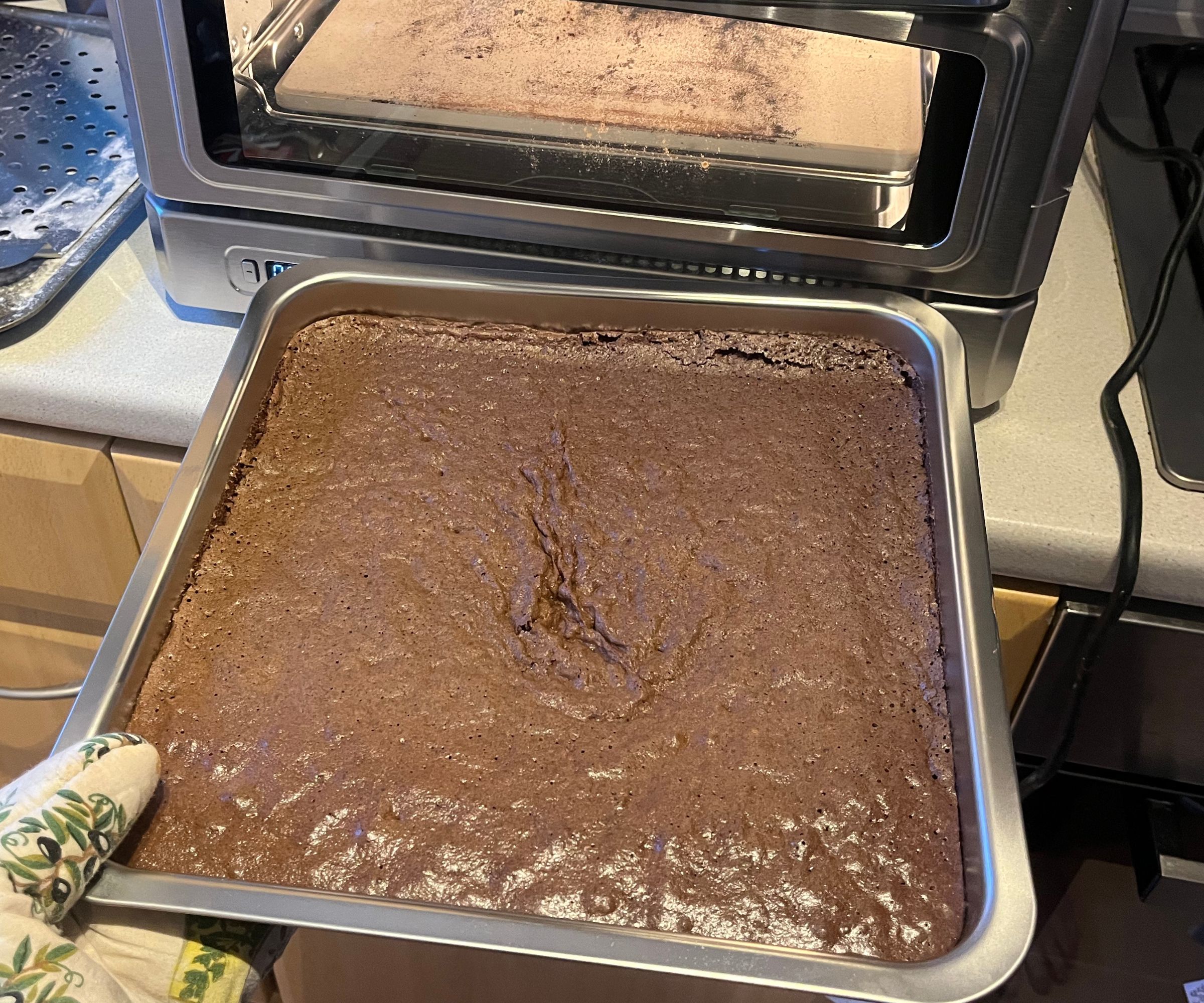
We always test pizza ovens at how well they can cook other dishes, and this Cuisinart oven is no exception. I had some ready-made brownie mix on hand, so I combined it together and poured it into the deep dish pan.
After 20 minutes I had brownies - sort of. The brownies were well-cooked at the back, but I noticed a distinct cool patch all along the front of the pan, which was uncooked. This is pretty worrying, as the mix was only an inch thick, which doesn't bode well for thicker bakes.
This is a worse result than the other tests. In the other tests, I could've achieved the same result in an oven. In this test, I had slower, worse result than if I'd just cooked them in an oven.
Cleaning, storage, and maintenance
Having said all this, this pizza oven was easy to clean. It was simple to brush the worst of the soot from the pizza stone, and I could quickly wash the pizza peel and deep dish pan in the kitchen sink. The latter is nonstick, which made it even easier.
Storage, however, is a bigger issue. It's a very big appliance, and I don't have anywhere in the apartment to store it. It would have to sit on my countertop year-round, and it takes up about half of the space. That's a lot of room to give up for an appliance that's pretty niche.
How does it rate online?
I found an interesting mix of reviews online. Most other professional reviewers have found that it's far from the quality of other pizza ovens, and not much different from baking in an oven.
However, lots of other users on Amazon and other retailer websites love it. They like the pizza it makes, and like that it's cheaper than lots of other pizza ovens. They also like that it runs off electricity instead of gas or wood, which can be expensive, and impossible if you lack outdoor space.
However, lots of others agree with me that it's not much different from an oven. Others found it too large or took a while to cook. It's not a problem I have, perhaps because I was running it off a 230V outlet, but others found that it takes around half an hour to reach temperature.
How does it compare?
The fairest comparison is to the Breville Smart Oven Pizzaiolo, another indoor pizza oven. The Cuisinart has one clear advantage over the Breville: price. This oven is usually $600 cheaper than Breville's oven, so if you want indoor pizza on a budget you'd be hard-pressed to beat this on price.
However, the benefits end there. The Breville makes larger pizzas, gets much hotter and cooks faster, and has a dedicated mode for cooking different styles of pizza. While I think gas or wood tastes a little better, the pizza you can make in the Breville Oven is far better than the pizza in the Cuisinart.
Another option is the Ooni Volt 12, which is similarly better at making pizza than the Cuisinart and can also be used outdoors.
Unfortunately, I think this oven is far from the standards of gas or wood-fired ovens. These ovens cook faster and give pizzas delicious leopard spots. Wood-fired ovens in particular impart deep, smoky flavor. This Cuisinart oven is far off the flavor you can get from an Ooni Fyra 12, for instance.
However, I think a better comparison would be to something like the Breville Smart Oven. This is a little toaster oven with an air fryer mode, and I think you'd be better off with this. It has a pizza mode which does a similar job to this oven, but takes up less room and has more functionality. You'd also be better off Cuisinart's own TOA-60 toaster oven. It's not great, but you can cook more with it.
Should you buy it?
I don't think you should buy this oven. In its defense, it's just as much fun as any other pizza oven I've used. However, I could've had as much enjoyment out of doing all the same steps with my usual kitchen oven, and I would've made a very similar pizza.
How we test
We test all our pizza ovens on a wide range of different pizzas and recipes. We time how long it takes them to warm up and cook, measure how loud they are, and double-check all the measures. We then assess the taste of all the pizzas and judge this against the price of pizza to see If it's good value.







